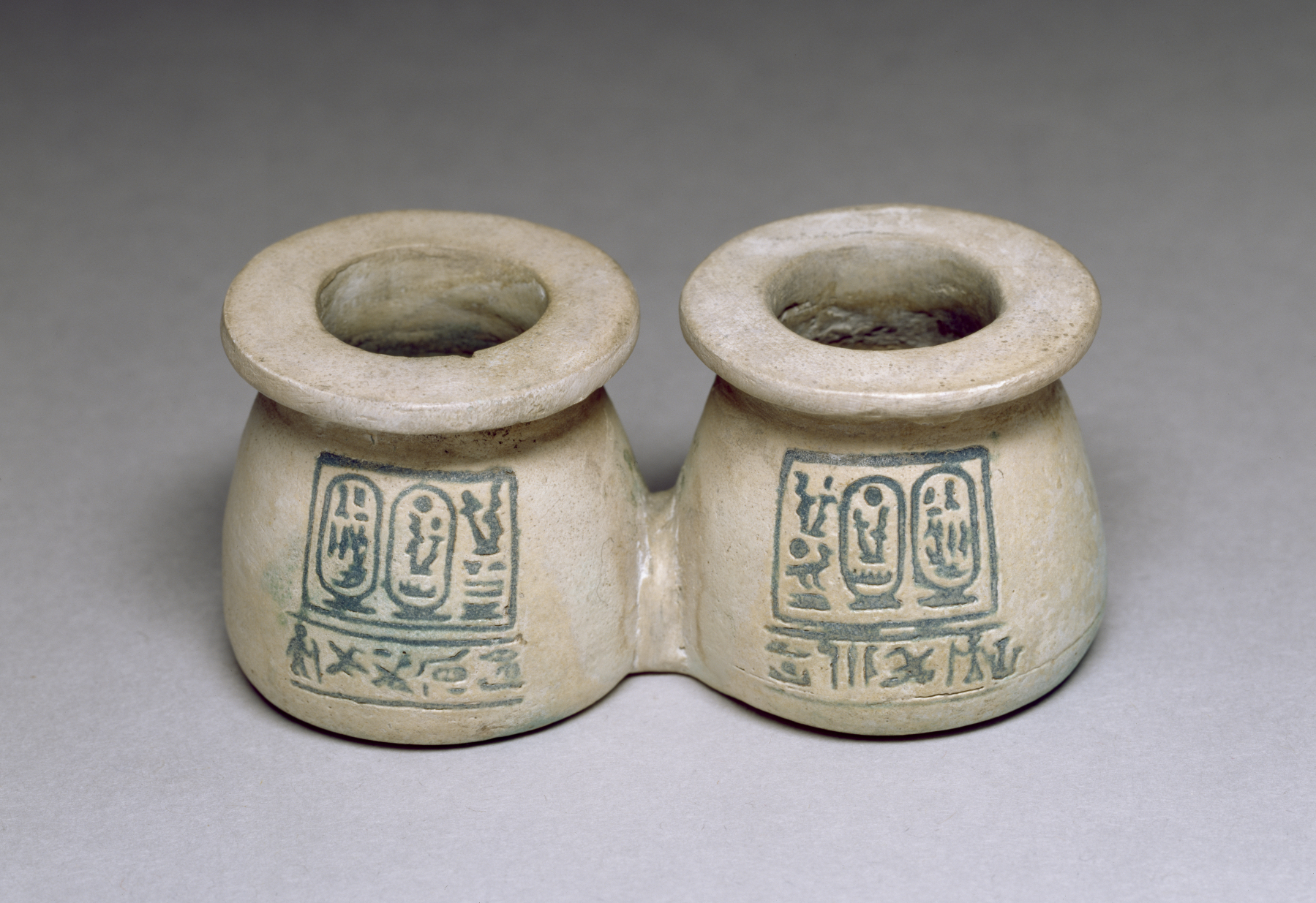Conjoined Jars
(Ancient Egypt and Nubia )
Multivessel ensembles are documented in ancient Egypt during all periods, but they are particularly abundant in the New Kingdom and Late Period contexts. Each of these conjoined vessels has a squat conical form tapering upward, a flat bottom, and a protruding lip. The vessels are joined at their lower halves; traces of breakage on the side opposite the inscriptions indicate that they may have been part of an ensemble of four of more vessels.
Inscriptions of dark blue faience paste are inset on the front of the vessels. Each inscription is composed in three columns in a rectangular frame containing the throne and birth name of Sety I: "Men-Maat-Re; Sety, beloved of Re," as well as the epithets "beloved of Maat," who is named "Daughter of Re" on the right vessel and "Mistress of the Two Lands" on the left vessel. A line below each frame gives the name and titles of the owner of the ensemble "Paser," the title mentioned on the right is "priest of Maat" and on the left, "governor of the city and vizier."
Provenance
Provenance (from the French provenir, 'to come from/forth') is the chronology of the ownership, custody, or location of a historical object. Learn more about provenance at the Walters.
Dikran Kelekian, New York and Paris, [date and mode of acquisition unknown]; Henry Walters, Baltimore, 1926, by purchase; Walters Art Museum, 1931, by bequest.
Conservation
| Date | Description | Narrative |
|---|---|---|
| 8/24/1998 | Examination | survey |
Measurements
1 7/16 x 3 5/16 x 1 11/16 in. (3.7 x 8.5 x 4.3 cm)
Credit Line
Acquired by Henry Walters, 1926
Location in Museum
Accession Number
In libraries, galleries, museums, and archives, an accession number is a unique identifier assigned to each object in the collection.
In libraries, galleries, museums, and archives, an accession number is a unique identifier assigned to each object in the collection.
48.457


